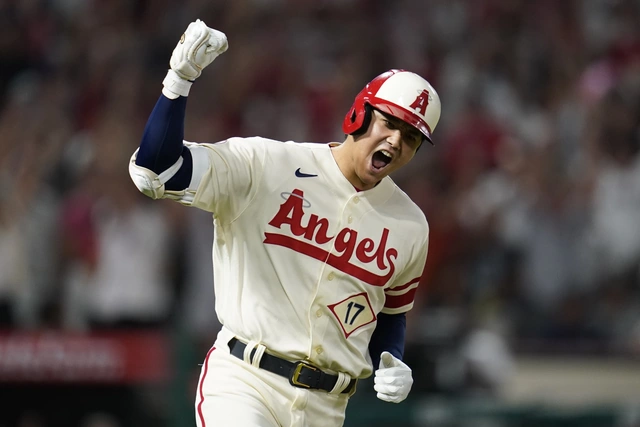Century Sports Transformation
When talking about Century Sports Transformation, the sweeping changes in how games are played, watched, and managed over the last hundred years. Also known as sports evolution, it covers everything from equipment upgrades to new digital formats. A major player in this shift is eSports, competitive video‑gaming that now draws stadium crowds and massive online audiences. Another driver is sports diversity, the growing representation of different ethnicities, genders, and abilities in professional leagues, which pushes clubs to rethink recruitment and fan outreach. Finally, sports origins, the historical roots of each game that influence modern rule‑making give us context for why today’s changes matter.
One easy way to see the transformation is to compare old‑school football with today’s global league. A century ago, local clubs played on muddy pitches with leather balls that swelled when wet. Now, high‑tech stadiums use climate‑controlled fields and lightweight synthetic balls that stay consistent in any weather. This technical upgrade is a clear example of the Century Sports Transformation triple: technology improves equipment, equipment boosts performance, and performance raises fan expectations.
Key Drivers of Sports Change
First, digital competition reshapes the fan experience. eSports tournaments fill arenas that once hosted only physical sports, proving that spectators crave fast‑paced, interactive action. Streaming platforms let fans watch a match from their phone while betting in real time, blurring the line between observer and participant. This shift forces traditional leagues to adopt live‑stats apps, augmented‑reality replays, and social‑media‑driven storytelling.
Second, diversity accelerates market growth. When the NFL highlighted Asian players, it sparked new viewership in Asian markets, encouraging sponsors to fund grassroots programs. Likewise, women’s soccer leagues have attracted record crowds after clubs invested in equitable pay and marketing. These moves show the semantic link: sports diversity expands audience reach, which fuels revenue, which in turn funds further inclusion.
Third, understanding origins helps leagues modernize rules responsibly. Take rugby: its 19th‑century scrum was dangerous, so rule‑makers trimmed it for safety. By respecting heritage while applying medical insights, the sport stays true to its roots yet stays relevant. This relationship—sports origins inform rule updates that improve safety and appeal—keeps fans engaged across generations.
Health considerations also play a part in the century‑long shift. Articles on cardiac arrest prevention remind athletes that conditioning matters as much as skill. Clubs now employ full‑time nutritionists and mental‑health coaches, turning wellness into a competitive edge. This ties back to transformation: better health protocols lead to longer careers, which enriches the sport’s storylines and deepens fan loyalty.
Rivalries illustrate how tradition fuels modern hype. The Lakers‑Celtics saga, for example, started in the 1960s but still drives TV ratings because the narrative has been refreshed with new stars, social media debates, and global marketing campaigns. Such enduring matchups prove that history and innovation can coexist, reinforcing the central idea that Century Sports Transformation is both a legacy and a future‑forward process.
All these threads—digital competition, diversity, origins, health, and rivalries—intersect to create the dynamic landscape you’ll see in the posts below. Whether you’re curious about eSports acceptance, the rise of Asian athletes in the NFL, or how classic games were first invented, the collection gives you practical examples of transformation in action. Dive in to see how each piece fits into the bigger picture of sports evolving across the century.
How have sports changed in the last 50-100 years?

Over the last 50-100 years, sports have undergone monumental transformations. Technological advancements have reshaped training, performance, and even the way we watch games, making sports more accessible to the masses. There's been a significant shift in societal attitudes too, with increased inclusion and diversity in athletes, and a growing emphasis on the importance of sports for health and wellbeing. The commercialization of sports has also escalated, turning athletes into celebrities and sports events into billion-dollar industries. Yet, the core essence of sports - the grit, determination, and passion - remains unchanged.
Categories
RECENT POSTS
Escort Services in Dubai: Reality vs. Myth
Escort services in Dubai are often misunderstood. Behind the myths of glamour and allure lies a complex reality of survival, boundaries, and human dignity. Here’s what actually happens.
Greta Thunberg alleges abuse as Israel deports Gaza aid activists
Activists from the Global Sumud Flotilla were deported to Istanbul on Oct 5, 2025, with allegations that Greta Thunberg suffered mistreatment in Israeli custody, heightening tensions over Gaza's blockade.
When will Shohei Ohtani become a free agent?
Shohei Ohtani is a two-way baseball player for the Los Angeles Angels who is set to become a free agent in the fall of 2021. He is currently under contract with the Angels until then, and cannot be signed by another team until that point. However, teams can negotiate with Ohtani's representatives prior to the free-agency period, as teams are allowed to negotiate with players who have three or more years of MLB service. Ohtani is expected to be one of the most sought-after free agents next year, and could potentially receive a large contract from a team looking to sign him.
Angela Rayner’s rise and sudden fall: From union floor to Deputy PM, then out over code breach
Angela Rayner went from a teenage mum who left school with no qualifications to Deputy Prime Minister and Housing Secretary. Her direct style and union roots made her a Labour star, but controversies followed. Cleared over a council house sale and donor gifts, she later resigned after an ethics report found a Ministerial Code breach over stamp duty. Her exit leaves a gap in Labour’s housing push.
How to Maintain Friendships With Clients Without Coming Across as Unprofessional
Learn how to build genuine, lasting relationships with clients without crossing professional boundaries. Real tips on warmth, boundaries, social media, and when to say no.




